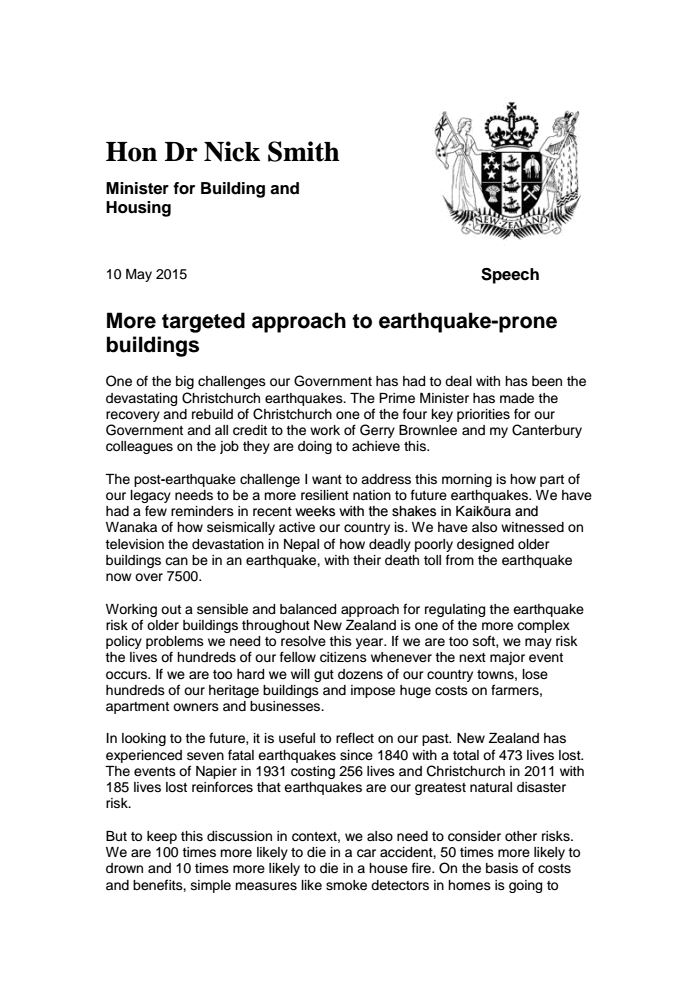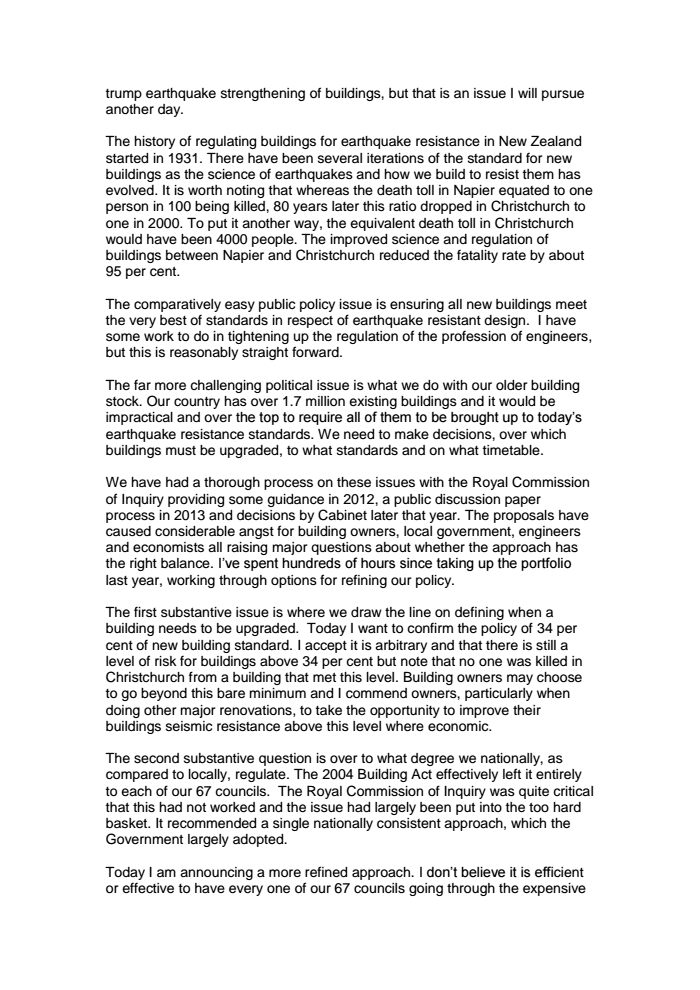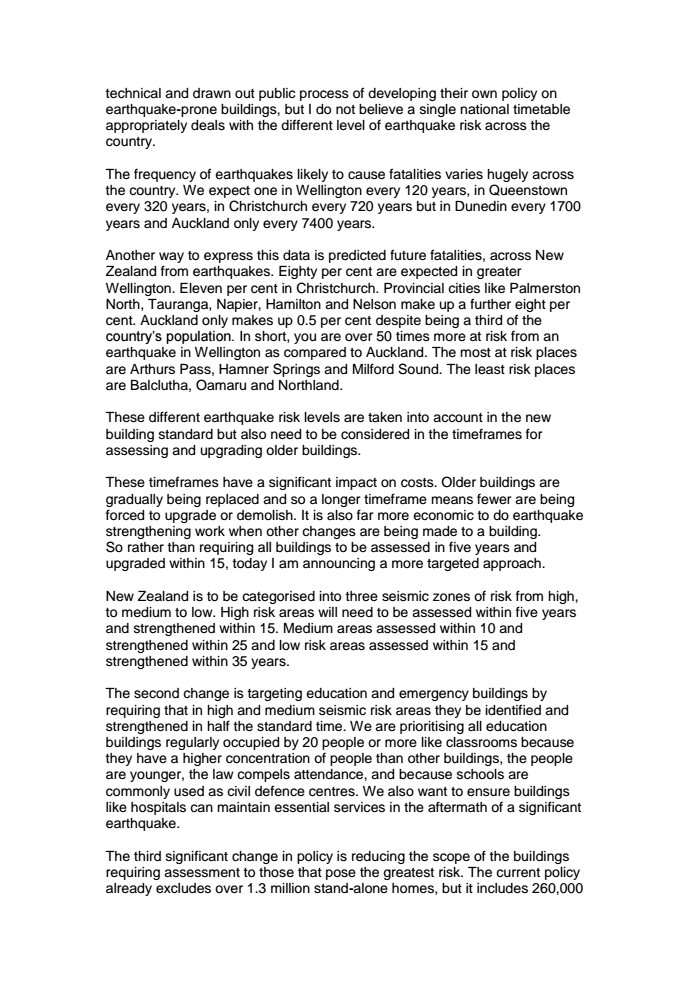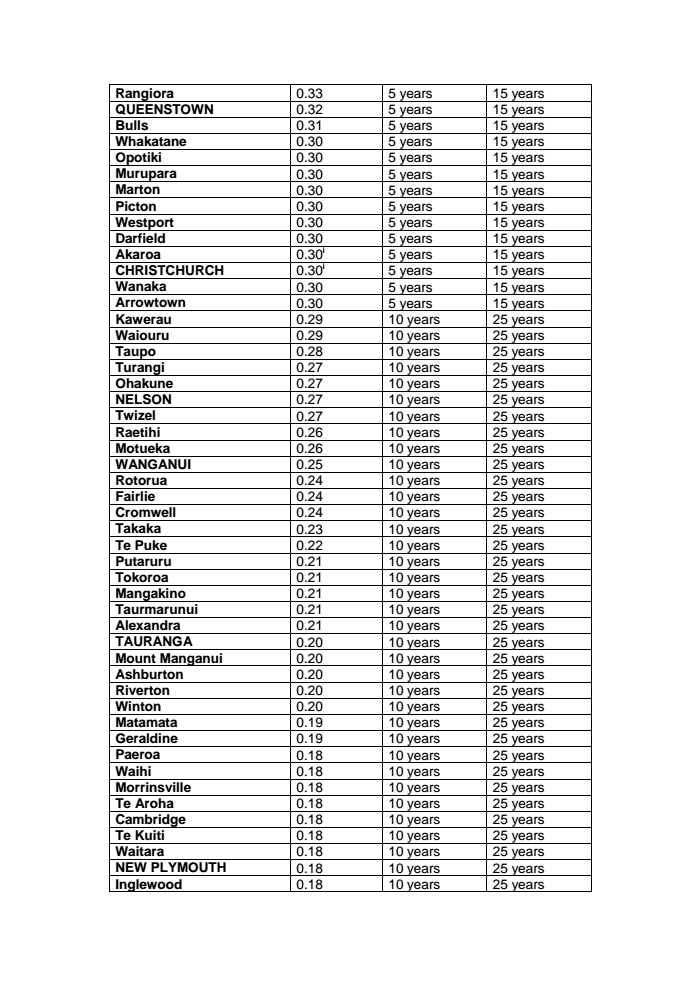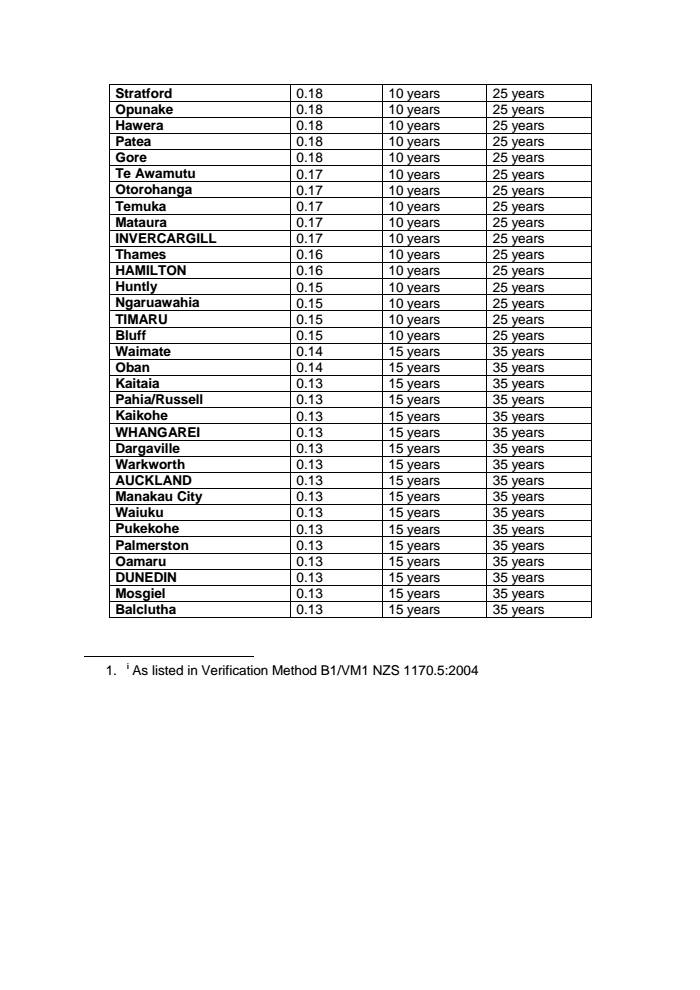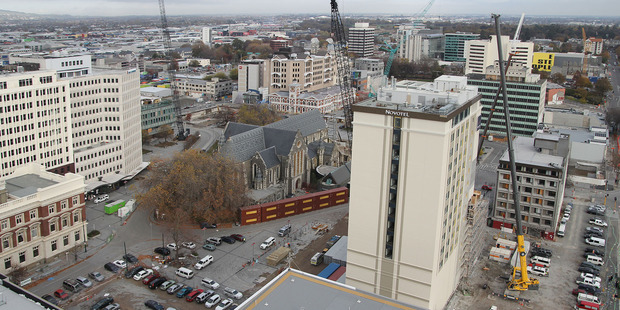
Major changes to how quickly earthquake-prone buildings will need to be assessed and strengthened have been announced.
Building and Housing Minister Dr Nick Smith said the changes would reduce the number of buildings that would require assessment from an estimated 500,000 to 30,000, and bring down the total estimated cost from $1360 million to $777 million.
The Government has come under pressure to re-examine its rules around earthquake strengthening after people who own older buildings faced huge bills and uncertainty, and groups using heritage buildings predicted they would need to be abandoned or pulled down.
Currently buildings that could be a risk need to be assessed within five years, with any strengthening carried out within 15 years.
The country will now be split into zones according to the risk of a big earthquake, and the timeframes for assessment and strengthening varied accordingly.
Affected buildings in low risk areas like Auckland, Northland and Dunedin will now need to be identified and assessed within assessed within 15 years and strengthened within 35 years.
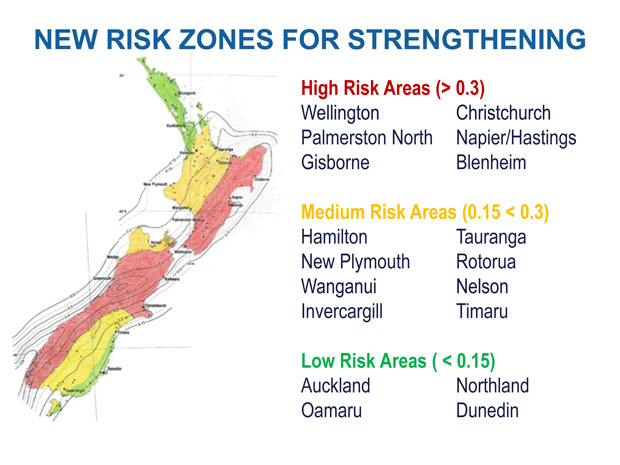
The time frame will be 10 years and 25 years for buildings in medium risk areas including Hamilton, Tauranga, New Plymouth, Rotorua, Wanganui, Nelson, Invercargill and Timaru.
High risk zones - including Wellington, Christchurch, Palmerston North, Napier and Hastings, Gisborne and Blenheim - will keep the existing timeframe of assessment within five years and strengthening within 15 years.
"The return period for a significant earthquake (MM8) ranges from 120 years in Wellington, to 720 years in Christchurch, to 1700 years in Dunedin, and only once every 7400 years in Auckland," Dr Smith said in a speech to the National Party's Mainland regional conference in Ashburton.
"Education and emergency buildings will be targeted by requiring that in high and medium seismic risk areas they be identified and strengthened in half the standard time.
"We are prioritising all education buildings regularly occupied by 20 people or more. We also want to ensure buildings like hospitals can maintain services in the aftermath of a significant earthquake.
"The effect of these policy changes is that buildings like schools, universities and hospitals in high and medium seismic risk areas will have to be upgraded more quickly, but buildings in low risk areas like Auckland and Dunedin more gradually."
Dr Smith said the current earthquake-prone building definition as being less than 34 per cent of the new building standard would remain in place.
However, farm buildings, retaining walls, fences, monuments, wharves, bridges, tunnels and storage tanks would be excluded, with the new rules focusing on older buildings like unreinforced masonry.
Dr Smith said building owners would be encouraged to upgrade buildings ahead of the allowable timeframe through the establishment of a web-based public register of buildings needing work, and requiring notices on such buildings that highlight the level of risk.
"There will also be a new requirement to strengthen earthquake-prone buildings when doing substantial alterations.
"The select committee is considering the Bill [containing the changes] and will be reporting back to Parliament in July with passage later this year.
"This is the most comprehensive policy of any seismically active country for dealing with older buildings and strikes the right balance between safety, cost, heritage and practicality."
Auckland Mayor Len Brown welcomed the changes to the proposed earthquake legislation, and said it came after submissions from the council and other concerned local authorities.
He said many buildings in Auckland would be replaced or significantly renovated during the next 35 years regardless of earthquake requirements, meaning property owners would save money under the revised rules.
"The changes to the proposed legislation still save lives, but will reduce the cost that was due to be imposed on Auckland property owners," he said.
"Our team made a well considered and researched submission that emphasised the low risk of earthquake to Auckland and the benefits of a better targeted approach to earthquake safety, and this appears to have paid off."
Read: Nick Smith's speech on earthquake-prone buildings
Schedule of revised timetable by location
